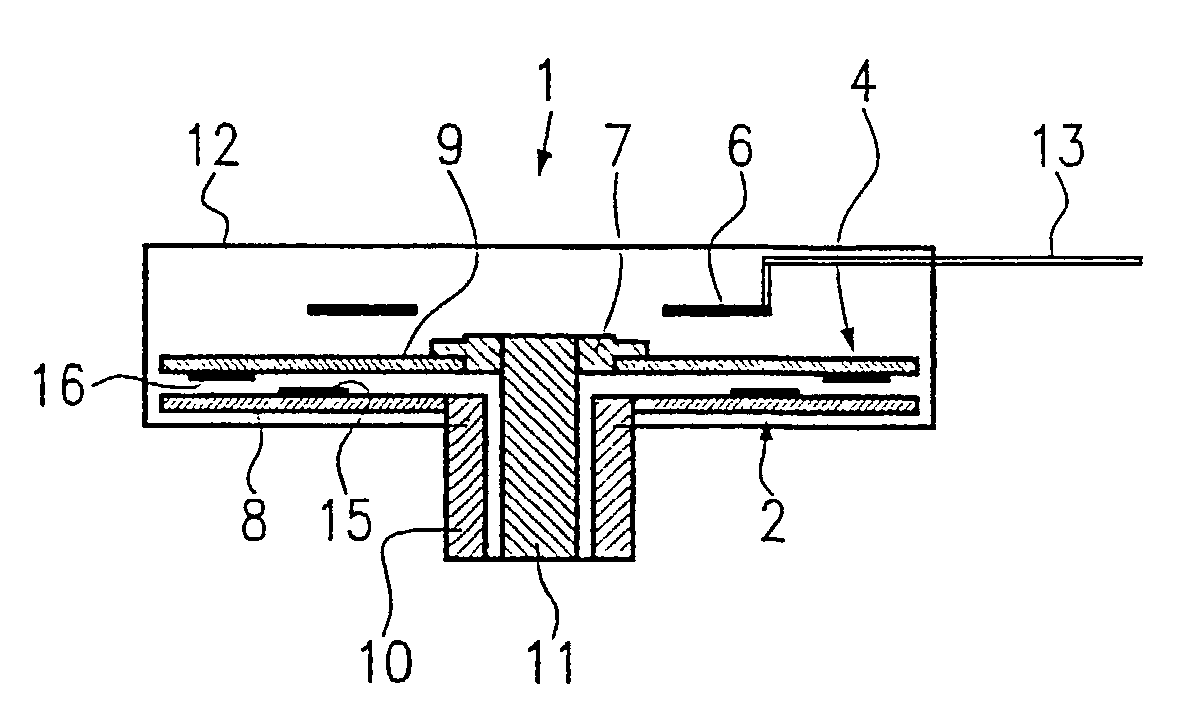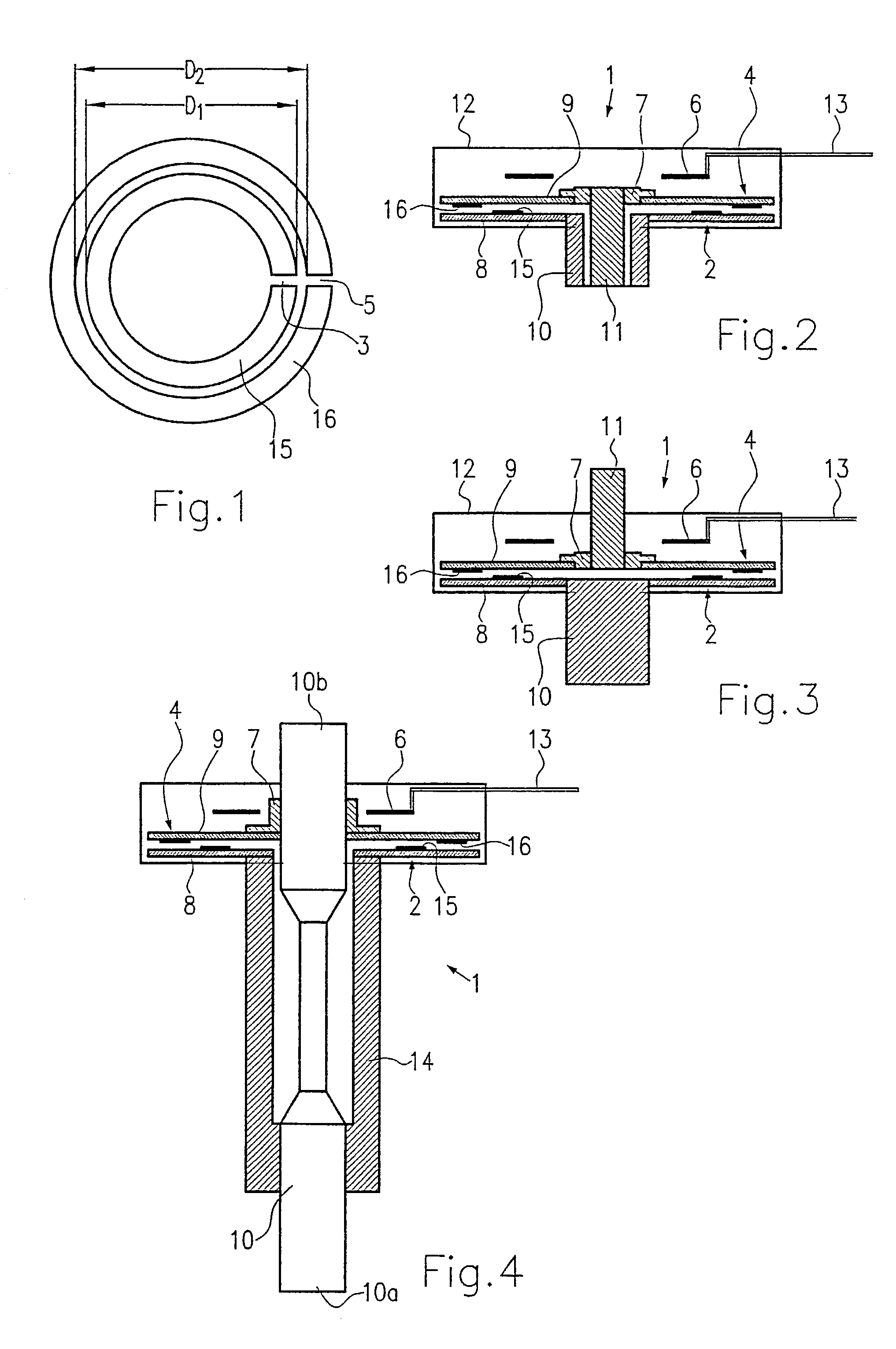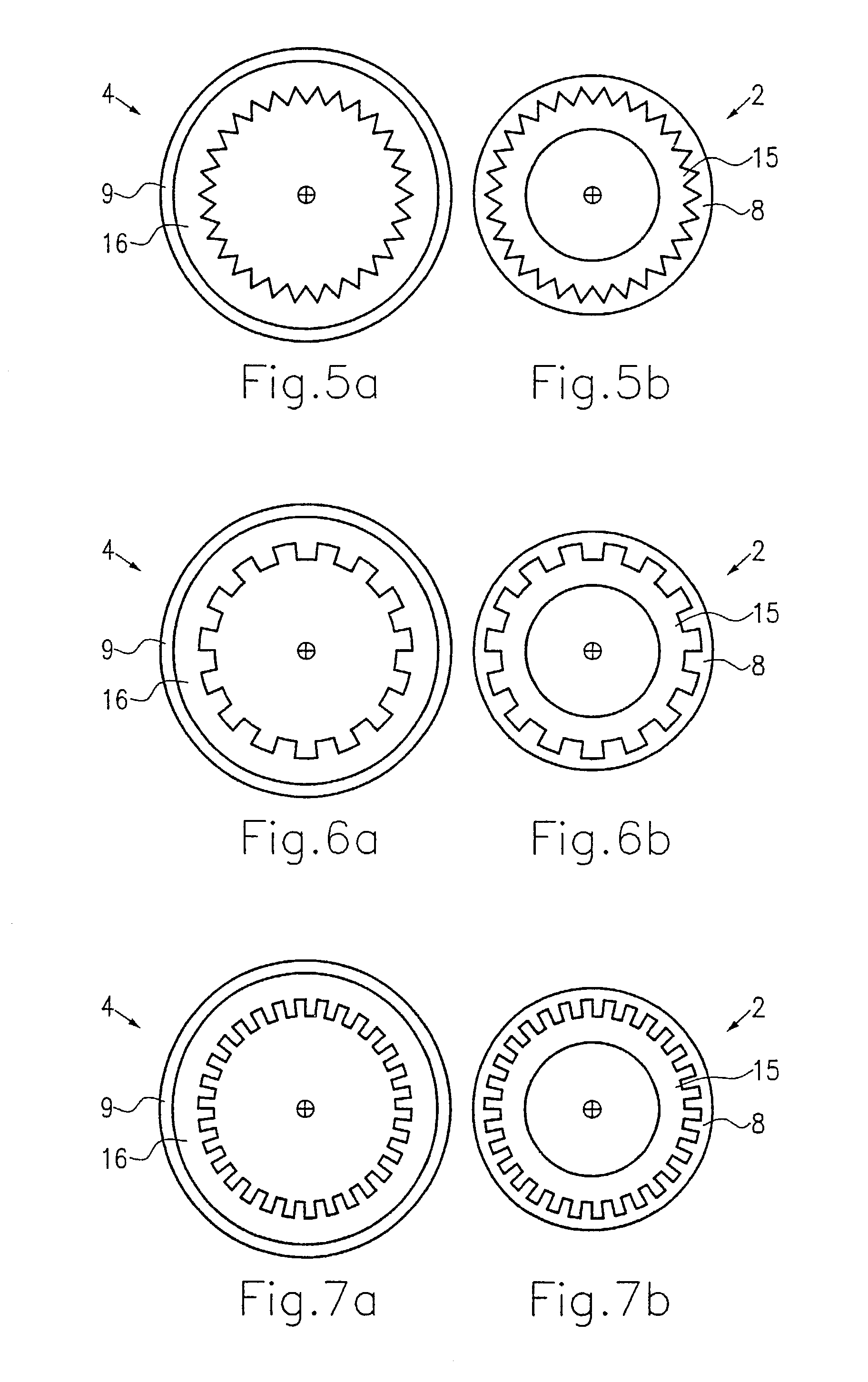Measurement of angle rotation using microstrip resonators (2.4ghz,2 degree)
a microstrip resonator and angle detection technology, applied in the direction of waveguides, instruments, waveguides, etc., can solve the problems of relatively short service life and high cost of production, and achieve the effect of robustness, economical and easy to produ
- Summary
- Abstract
- Description
- Claims
- Application Information
AI Technical Summary
Benefits of technology
Problems solved by technology
Method used
Image
Examples
Embodiment Construction
[0030]In FIGS. 1 and 2, a first measuring device of the invention for contactless detection of an angle of rotation is shown. The measuring device 1 includes a first resonator 2 and a second resonator 4. The resonators 2 and 4 each comprise a respective substrate plate 8 and 9 and a metallization 15 and 16 applied over it (see FIG. 2). The substrate plates 8, 9 are made from a printed circuit board material. As shown in FIG. 1, the metallization 15 of the first resonator 2 has a slit 3, and the metallization 16 of the second resonator 4 has a slit 5. In FIG. 1, the two annularly embodied metallizations 15, 16 of the resonators 2 and 4 are shown in their outset position. It should be noted that besides the outset position shown in FIG. 1, outset positions with slits rotated relative to one another are also possible. An enhanced sensitivity can thus be achieved. Furthermore, with slits rotated relative to one another, the direction of rotation is also easily measurable.
[0031]The two r...
PUM
| Property | Measurement | Unit |
|---|---|---|
| resonant frequency | aaaaa | aaaaa |
| frequency | aaaaa | aaaaa |
| diameter | aaaaa | aaaaa |
Abstract
Description
Claims
Application Information
 Login to View More
Login to View More - R&D
- Intellectual Property
- Life Sciences
- Materials
- Tech Scout
- Unparalleled Data Quality
- Higher Quality Content
- 60% Fewer Hallucinations
Browse by: Latest US Patents, China's latest patents, Technical Efficacy Thesaurus, Application Domain, Technology Topic, Popular Technical Reports.
© 2025 PatSnap. All rights reserved.Legal|Privacy policy|Modern Slavery Act Transparency Statement|Sitemap|About US| Contact US: help@patsnap.com



